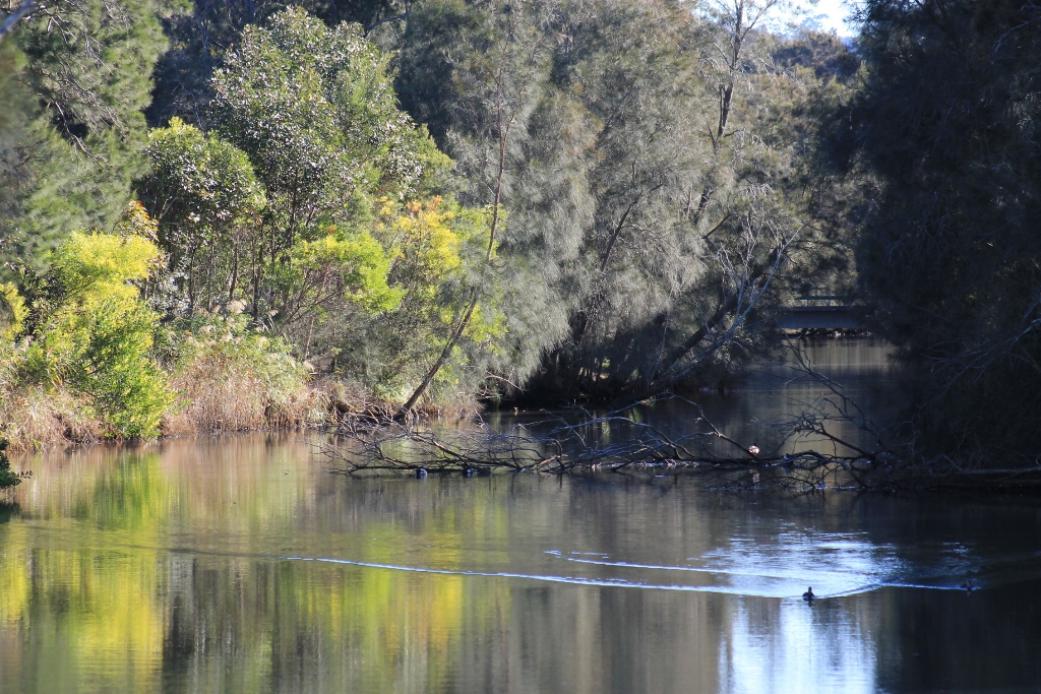During this week Artist Penel Bigg (
Fire Beads) found this tiny turtle on the side of the road near where she lives - Narrabeen Lagoon - Elanora Heights. The discovery is a sign that there's more moving out there to see if you keep your eyes open and that we live in an environment where freshwater wetlands meet saltwater expanses and that turtles and frogs inhabit these creeks.
Penel picked the little turtle and returned it to a creek.
This is an Eastern Snake-necked Turtle (Chelodina longicollis). In late Spring and early Summer, the female will lay between 2 and 10 eggs in the banks of her aquatic habitat. Three to five months later the hatchlings break out of their shells. So there may be a few more out and about during the next few weeks.
Tiny Chelodina longicollis. Photos courtesy Penel Bigg
The eastern long-necked turtle, Chelodina longicollis (Family Chelidae), has a wide distribution throughout southeastern Australia. It occupies a broad range of freshwater aquatic habitats but is more abundant in shallow, ephemeral wetlands often remote from permanent rivers. This one would be more at home in Warriewood wetlands.
Its propensity for long distance overland migration, coupled with a low rate of desiccation and the capacity to estivate on land, enable it to exploit highly-productive ephemeral habitats in the absence of competition from fish and other turtle species. In wetter periods, such habitats provide optimal conditions for growth and reproduction.
In drier periods, however, turtles may need to seek refuge in permanent water where high population densities and low productivity can lead to reduced growth rates and reproductive output.
This turtle is relatively slow to mature (7–8 yrs for males and 10–12 yrs for females), but can produce up to 3 clutches per year. Although they are currently considered common and not under major threat, the most widespread conservation concern for C. longicollis is high nest predation from the introduced fox (Vulpes vulpes), and roads, pest fencing, and habitat changes brought about by prolonged drought and climate change, which present localised and potential future threats for certain populations.
The carapace is generally black in color though some may be brown, it is broad and flattened with a deep medial groove. The scutes are edged in black in those individuals with a lighter background color. The plastron is also very broad and is cream to yellow in color with sutures edged in black. The neck is long and narrow, typical of the subgenus Chelodina, and reaches a length of approximately 60% of the carapace length. The neck has numerous small pointed tubercles and is grey to black in color dorsally, cream below, as is the narrow head.
Females tend to grow to larger sizes and have deeper bodies. The maximum sizes recorded for females and males varies throughout the range, in river environments of the Murray it is 28.2 cm (11.1 in) and 24.9 cm (9.8 in) respectively, whereas in the Latrobe Valley it is 21.6 cm (8.5 in) and 18.8 cm (7.4 in) respectively. It is thought this is linked to productivity of the local environment.
When it feels threatened, this turtle will emit an offensive smelling fluid from its musk glands. This trait gives the turtle one of its other common names, "stinker".
The eastern long-necked turtle is carnivorous, eating a variety of animals. The species is an opportunistic carnivore that feeds on a broad range of plankton, nekton and benthic macro-invertebrates, carrion, as well as terrestrial organisms that fall upon the water. This includes insects, worms, tadpoles, frogs, small fish, crustaceans, and molluscs.
It is a side-necked turtle (Pleurodire), meaning that it bends its head sideways into its shell rather than pulling it directly back.
Warriewood is also home to a variety of frogs. A few years ago we ran a story on the rare Giant Burrowing Frog being found in this vicinity.
The wetland is also home to the Striped marsh Frog (Limnodynastes peronii), Spotted Grass Frog (Limnodynastes tasmaniensis), Dwarf Tree Frog (Litoria fallax) and Common Eastern Froglet (Ranidella signifera).
The striped marsh frog or brown-striped frog (Limnodynastes peronii) is a predominantly aquatic frog native to coastal Eastern Australia. It is a common species in urban habitats and one you may find setting up home in your backyard pond.
They will inhabit ponds, roadside ditches, creeks, dams, flooded areas and any other available water body. They are tolerant of polluted water. Males call while floating in water from a hidden area in vegetation. They make a "tok" or "whuck" call, similar to a hen clucking, during all months of the year (particularly spring-autumn). This call is familiar to anyone in Sydney who has a garden pond.
Females may reach a length of 75 millimetres (3.0 in) and males 70 millimetres (2.8 in). They are a shade of brown on the dorsal surface. This colour can be light or dark; they can also be a red-brown on the dorsal surface. There are distinct darker stripes running down the frogs back (giving this species its name), there is normally a paler mid-dorsal stripe running down the back. There is a black "mask" that runs from the nostril, through the eye and down to the shoulder. This "mask" is followed by a thick light golden line that runs underneath the "mask" and terminates at the end of the mouth.
(Limnodynastes peronii). Photo courtesy Liquid Ghoul
Breeding males develop thick arms, these are used in "wrestling" matches with other frogs. The throat of males is yellow in colour, their belly is white.
The spotted grass frog or spotted marsh frog (Limnodynastes tasmaniensis) is a terrestrial frog native to Australia. It is distributed throughout all of New South Wales and Victoria, eastern South Australia, the majority of Queensland, and eastern Tasmania.
This frog reaches 45 mm in length. Its colour ranges from light brown to olive-green, with large, irregular shaped, green or brown spots on its back. Occasionally it will have a thin, pale cream, yellow or bright orange stripe running from snout to vent. There is a raised pale stripe running from below the eye to the base of the arm. The arms and legs are spotted like the back, and the belly is white.
A Spotted Grass Frog demonstrating an orange mid-dorsal stripe. Photo courtesy Tnarg
Spotted Marsh Frog demonstrating larger blotches. Photo courtesy Banjamint444
This frog is common throughout Australia and is one of the first species to inhabit new dams and ditches. This species is associated with most habitats, including permanent or temporary dams, roadside ditches, ponds, flooded grassland and slow moving creeks, in urban areas, farmland, woodland, coastal areas and arid areas. The frog is usually found in grass or under other cover, near a still water source.
The males calling and the breeding will occur pretty much all year round, finishing during summer. The call of this frog varies from a staccato machine gun sounding burst to a single 'Tok' sound, depending on the call race, which varies geographically. The machine gun call is the northern call race, throughout NSW and QLD. The 'tok' call is the southern call race, which occurs in southern VIC and TAS.
The eastern dwarf tree frog or eastern sedge-frog (Litoria fallax), is a small and very common tree frog found on the eastern coast of Australia, from around Cairns, Queensland, to around Ulladulla, New South Wales. Individual frogs of this species are often found elsewhere, having been accidentally relocated by transported fruit boxes, commonly bananas as they live in banana trees in the north. Confirmed sightings of breeding pairs have confirmed their survival in Victoria's cooler climate.
This is a small species of frog; females can reach a maximum size of 25–30 mm, while males may only reach 20 mm when fully grown. It is of variable colour (depending upon temperature and colour of surrounding environment), ranging from fawn to light green on top, and occasionally has black flecks on its back. A white line begins under the eye, and joins the white stomach. A brown line begins from the nostril, and continues across the eye, and between the green (or fawn) and white sections on the top and bottom of the body. This species' toe discs are only slightly larger than the toes, and toes are 75% webbed. Some individuals will have an orange posterior thigh. The tadpoles are bigger than the adult frogs, with a size of 30 mm.
This frog is associated with a wide variety of habitats, including coastal swamps, lagoons, dams, ditches, and garden ponds in forest, heathland, wallum country, and cleared farmland.
Breeding occurs at small ponds or dams, which have ample reeds or other emergent vegetation. This species will often breed in temporary water. Its call is a short, high pitched, wr-e-e-ek ip-ip, repeated three or four times. They emit their calls from a single submandibular vocal sac. The males call during the spring and summer seasons, often before and after heavy rain.
About 200-300 eggs are laid at each amplexus, and clumps of spawn contain up to 35 eggs. The minimum tadpole lifespan is 118 days, at a consist temperature of 20 °C. Metamorphosis occurs from January to March, the metamorphs resemble the adults and are very small, only 9–13 mm in length.
Litoria fallax. Photo courtesy Liquid Ghoul
The common eastern froglet (Crinia signifera) is a ground-dwelling frog, of the family Myobatrachidae. This is a small frog (3 centimetres), of brown or grey colour of various shades. The frog is of extremely variable markings, with great variety usually found within confined populations. A dark, triangular mark is found on the upper lip, with darker bands on the legs. A small white spot is on the base of each arm. The dorsal and ventral surfaces are very variable. The dorsal surface may be smooth, warty or have longitudinal skin folds. The colour varies from dark brown, fawn, light and dark grey. The colour of the ventral surface is similar to the dorsal surface, but mottled with white spots.
The common eastern froglet will call within a large chorus of males close to a still water source, or slow flowing creek. The call of the male is a crik-crik-crik, this is heard all year round, during wet and dry conditions. An average of about 200 eggs are laid in small clusters attached to submerged vegetation, the tadpoles and eggs survive in 14–15 °C water. Tadpoles are normally brown and reach about 36mm in length. Development is relatively short, however it is dependent on environmental conditions. At a temperature of 15 °C development can range from 6 weeks to more than 3 months. Metamorph frogs are very small, about 8 mm.
The diet of the species consists of small insects, much smaller in comparison to their size to most frogs.
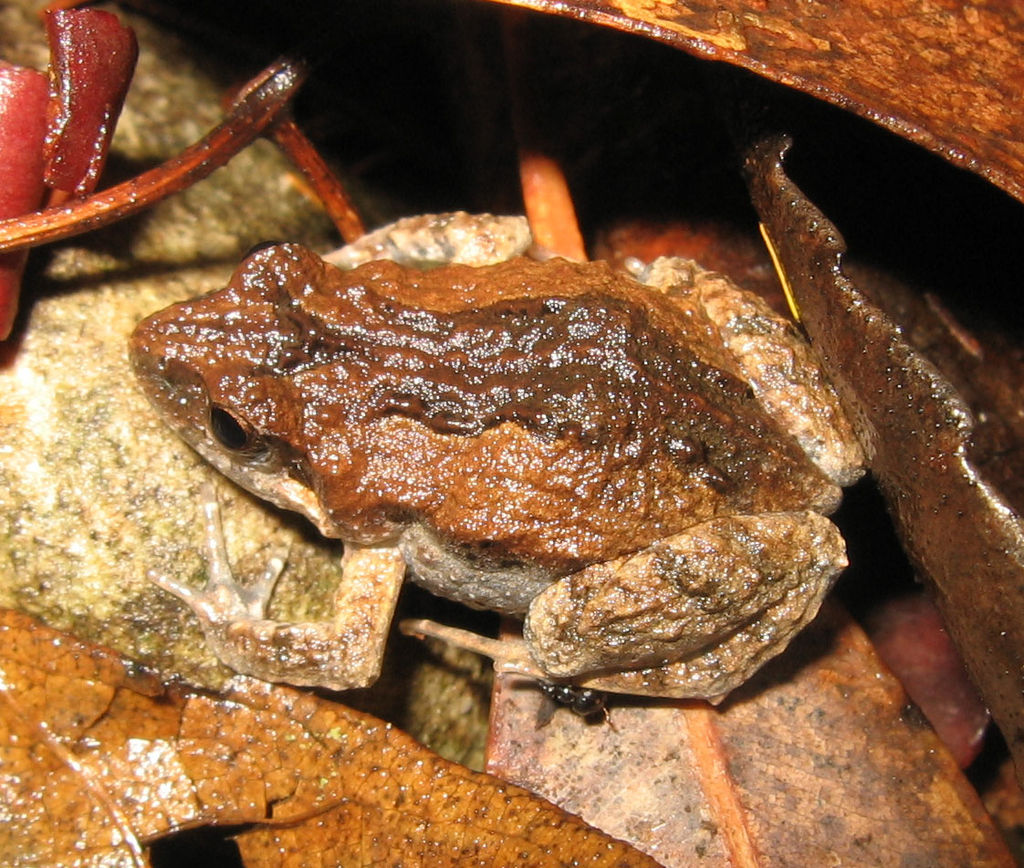
Crinia signifera. Photo courtesy Retama
Warriewood wetlands, alike Narrabeen Lagoon, Careel Bay and Bayview, form just part of the ways local creeks are keeping our wetlands and their surrounds
healthy . You can understand why this was chosen as a perfect place to launch the Citizen Science Projects in 2016. There is a Fauna List HERE of what you may see in Warriewood.
One Citizen Scientist Project people may be interested in contributing to is that being run by the Australian Museum (Sydney):
FROGID - HELP SAVE AUSTRALIA'S FROGS WITH YOUR MOBILE PHONE
Australia’s first national frog count is underway and everyone can join in, to help save one of the most threatened groups of animals on Earth.
The Australian Museum’s FrogID is a citizen science project that uses mobile phone technology and “audio DNA” to discover where frogs are at risk and how to conserve them and our waterways.
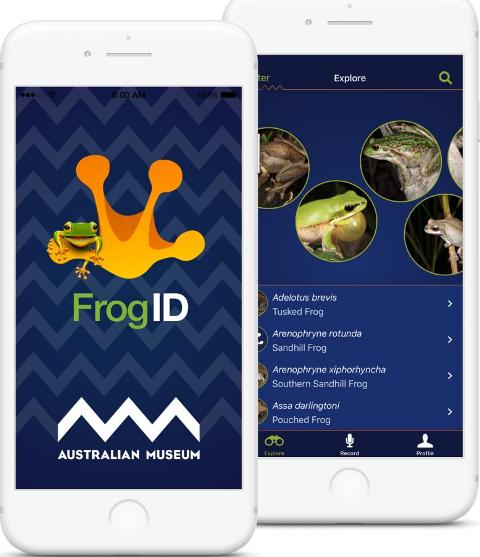 The free FrogID app
The free FrogID app, developed in partnership with IBM, identifies frog species by the sounds they make – from croaks and chirps, to whistles and barks. Up to 1 million Australians are expected to download the app and head to parks, creeks, dams or wetlands to listen for frog calls. Recording and uploading these calls will map frog species across Australia and reveal where they are at risk from habitat loss, disease, climate change and urbanisation. You might even discover a new frog species!
FrogID is the AM’s flagship citizen science project, with support from the Australian Government’s Citizen Science Grants and IBM Australia’s Impact Grants program, and in collaboration with the Museum & Art Gallery of the Northern Territory, Museums Victoria, Queensland Museum, South Australian Museum, Tasmanian Museum and the Western Australian Museum.
Australian Museum Director and CEO, Kim McKay AO, said FrogID is a national citizen science rescue mission that everyone can take part in.
“The power to save Australia’s frogs is now in the palm of your hand, whether you’re a family in your garden or on a bushwalk, at school or a grey nomad. Everyone can download the free FrogID app to help save these vulnerable species – the ‘canaries in the coal mine’ of climate change,” Ms McKay said.
“FrogID is a crowd-sourcing approach to conservation. The AM is proud in its 190th year to partner with IBM, the Australian Government and leading museums across the country on this ground-breaking union of citizen science and innovative technology.”
IBM Australia Managing Director, David La Rose, said: “IBM has a long history in collaborating with organisations like the Australian Museum to develop technology that has a real impact on the everyday lives of Australians. This joint initiative to develop the FrogID app is an inspiring example of how technology and science can work together to tackle an important social issue, while empowering Australians to help us gain new insight into the state of our waterways and environment.”
One of Australia’s leading frog experts, Dr Jodi Rowley, AM Curator of Amphibian & Reptile Conservation Biology, said FrogID will help conserve our 240 native frog species and their habitats.
“Frogs are a tipping point in the environment. The loss of frogs is also likely to have huge pest management implications for our agricultural production and wellbeing, as they help control insect populations, such as mosquitoes. If they disappear, entire ecosystems may be at risk,” Dr Rowley said.
“FrogID will allow us to make informed conservation decisions aimed at saving our frogs. But we need the public to play their part, so we can understand our many frog species across this vast country. By taking part in FrogID, you’re actively helping to save Australia’s frogs – you might even discover a new species.”
Dr Rowley, who is a joint appointment between the AM and UNSW Sydney, has discovered 26 frog species in Australia and Asia.
NSW Chief Scientist & Engineer, Professor Mary O’Kane AC, said “citizen science is vital to moving science forward rapidly”.
“FROGID is a tremendous example of the Australian Museum inspiring and engaging Australians of all ages in science, through an extremely important hands-on project that will shed new light on our different species of frogs, their habitats, the threats they face and how we can help them,” she said.
THE FROGID APP
Sir David Attenborough has described amphibians as “the lifeblood of many environments”. As one of the first animal species to feel the impact of environmental changes, declining frog populations are a “warning call” about the impacts of climate change and pollution on Australia’s waterways, wildlife and ecosystems.
Each frog species has a unique call, which is the most accurate way to identify different frog species. Recording and uploading frog calls, via the FrogID app, will identify different frog species, along with time and location data, using GPS technology. A team of frog experts will verify calls submitted by the public. This data will help map frog populations across Australia and identify areas and species under threat.
It may not be easy being green, as Kermit the Frog said, but it is easy to help save our frogs by downloading the free FrogID app. Find out more at
www.frogid.net.au.
For photographs and audio recordings of frog species, go to
The other organisation that supports research into all things froggy is the Frog & Tadpole Study Group NSW Inc. The Frog and Tadpole Study Group of New South Wales (FATS) is a community group dedicated to community awareness and conservation of frogs.
The Frog and Tadpole Study Group of New South Wales (FATS) conducts various community and conservation activities to assist frogs. These include holding information stalls at community environment fairs, presenting workshops on how to make your back yard frog friendly, building frog ponds and school presentations about frogs. FATS also runs a Frog rescue program for stow-away frogs that are accidentally transported into the cities, as well as cane toad removal and awareness programs. FATS also has advisors on governmental panels and conducts frogging field trips to various parts of the state.
Frog & Tadpole Study Group NSW Inc.
Student Grants 2018
The Frog and Tadpole Study Group (FATS) of New South Wales is offering small research grants to students and academics who are working on amphibians in Australasia. The grants are for 12 months and are up to $1,000 each. You can apply for more than one grant each year. You will be notified within four weeks of submission of the application regarding the outcome of the request.
Anyone interested in applying for the grants should contact myself by email
1arthur@tpg.com.au and seek an application form. The form is small and simple to complete. Applications can be made at any time throughout the year.
Successful applicants are asked to submit proof of expenditure of the money at the completion of the project and we also ask them to speak at one of our public meetings so that FATS' members can hear about their research efforts and results.
Of course, if you find a tiny turtle over the next few months that looks as though it is distressed, please contact WIRES, Sydney Wildlife or your local vet so they can ensure we have healthy wetlands teeming with the life that should be there.
Please call:
Sydney Wildlife 9413 4300 (24-hour service)
WIRES 1300 094 737
Also Available:
Environmental Restoration And Rehabilitation Grants
February 6th, 2018: NSW O&H
The Restoration and Rehabilitation grants program is now open to applications, and will close on Monday, 26 March 2018
Purpose
To assist in the ongoing sustainable management and stewardship of significant environmental assets and services in NSW.
Funding
Individual grants of up to $100,000 with a total of $2,000,000 for community organisations and $2,000,000 for government entities.
Who can apply
Community groups and organisations, incorporated associations, non-profit organisations, non-commercial cooperatives, Trusts and government entities.
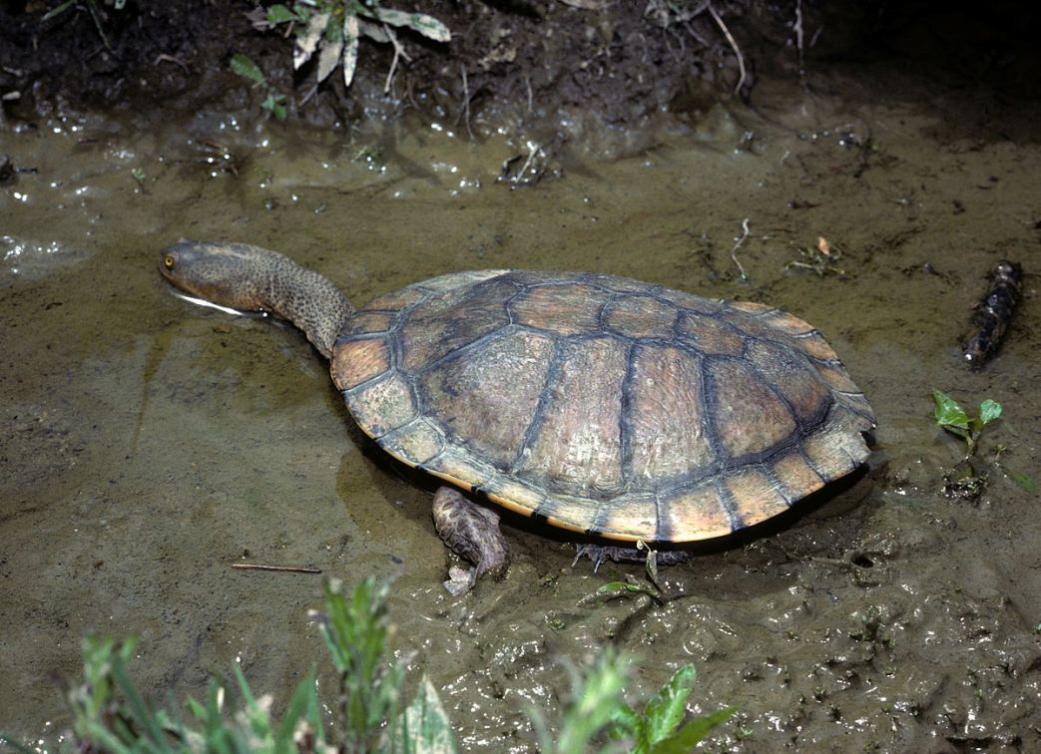
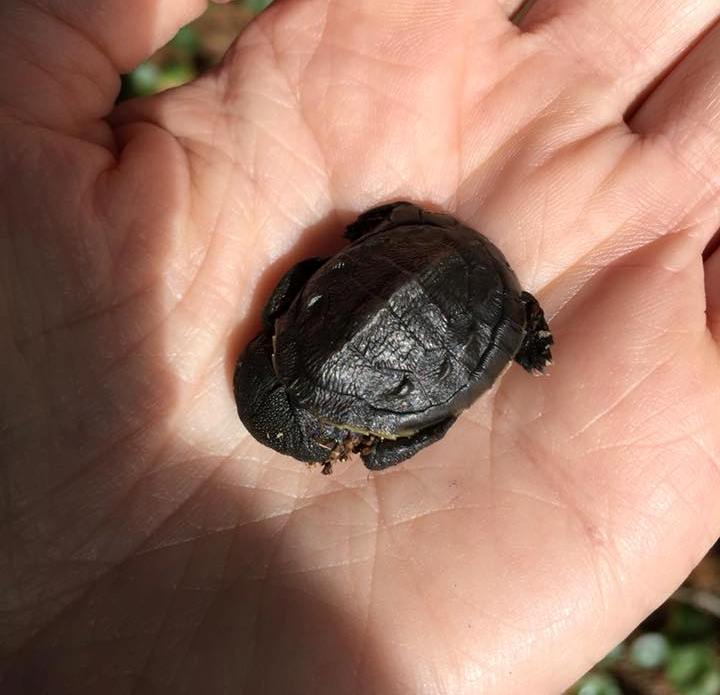
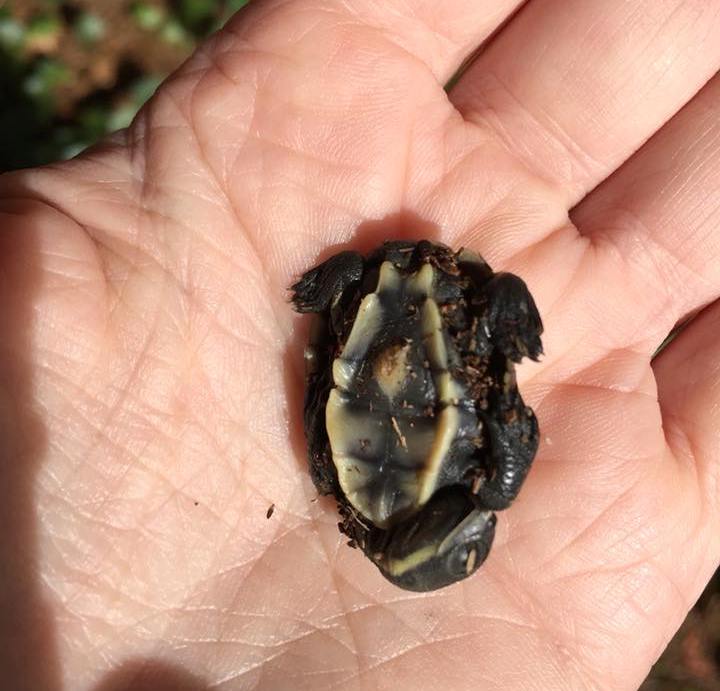
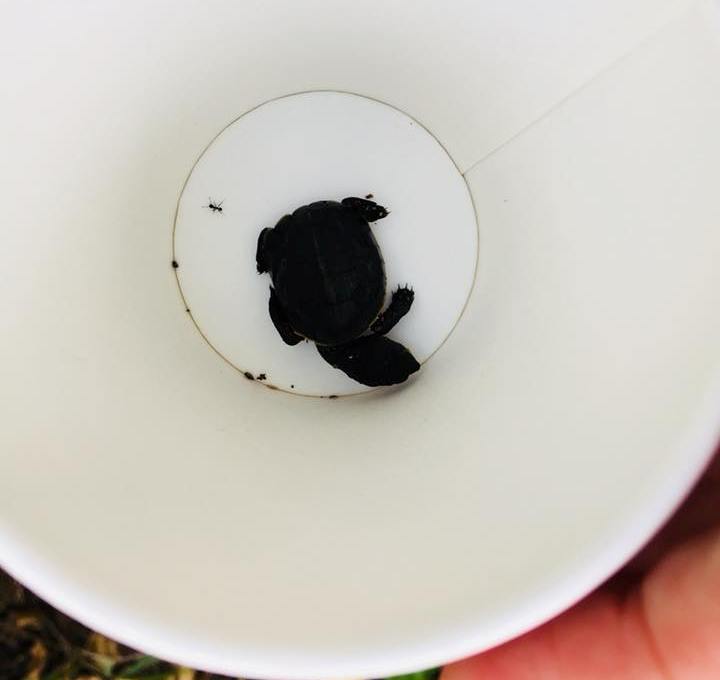
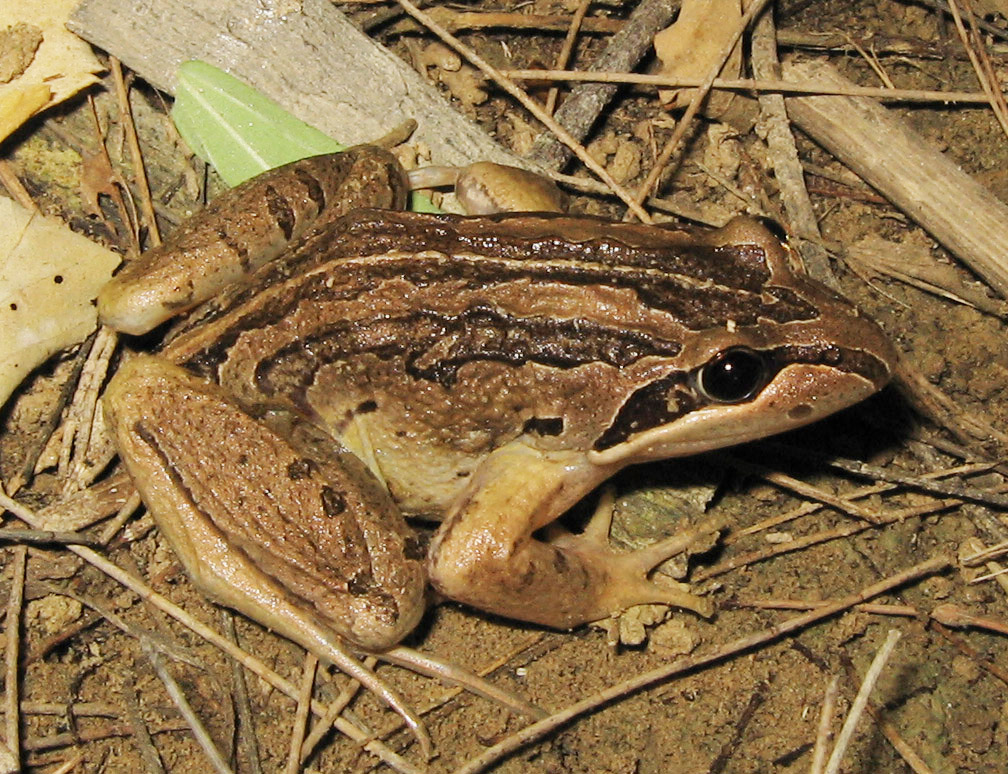
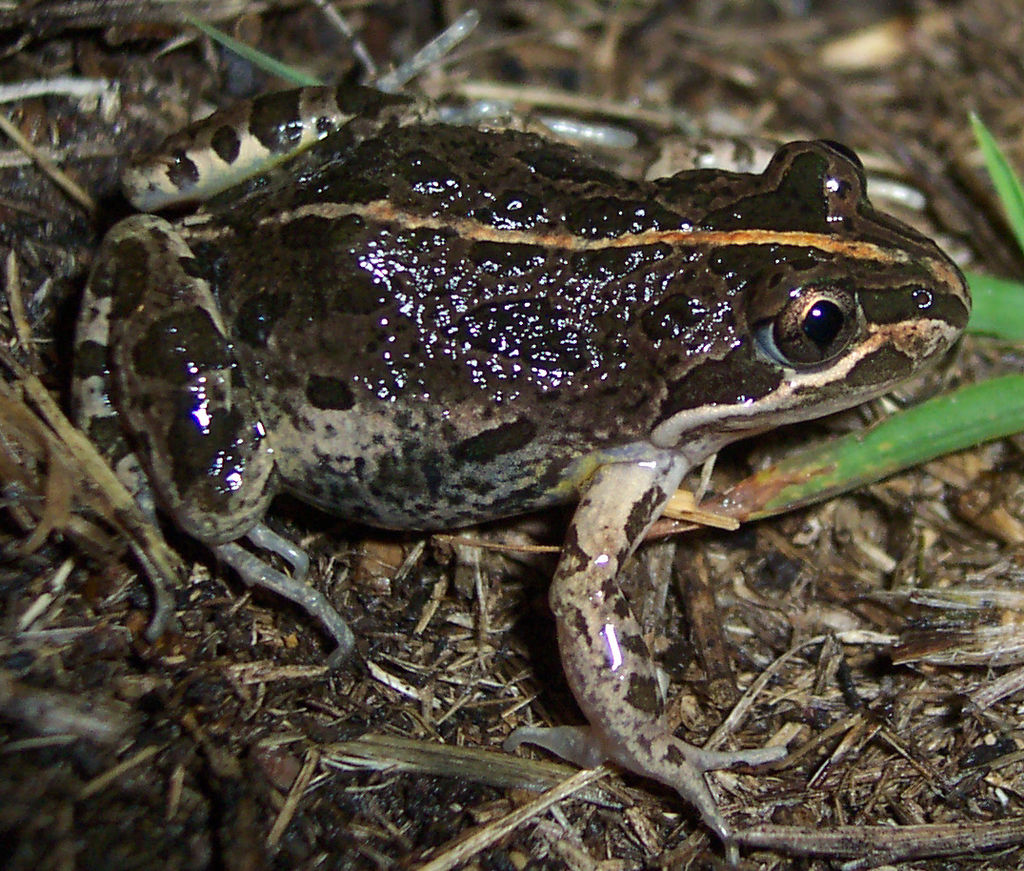
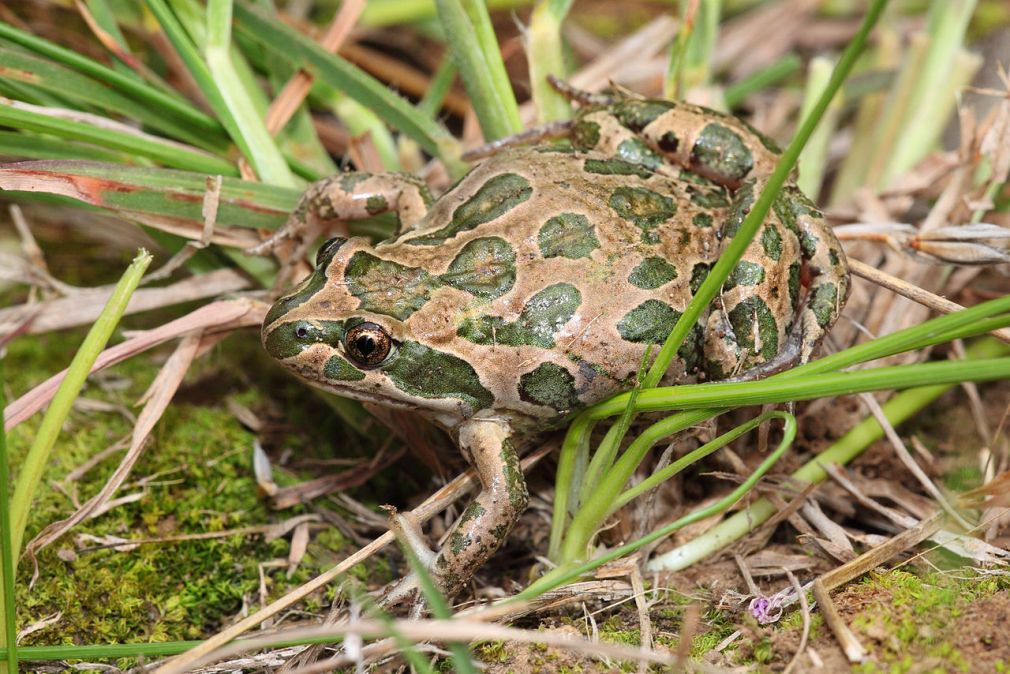
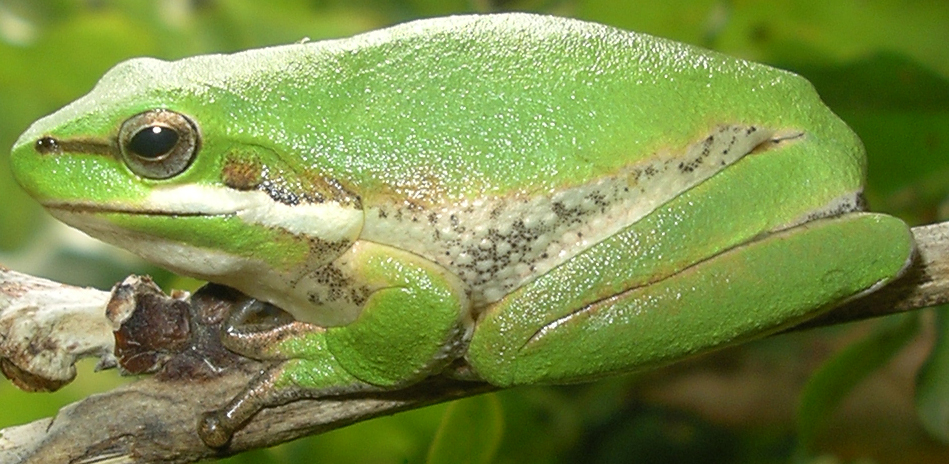

 The free FrogID app, developed in partnership with IBM, identifies frog species by the sounds they make – from croaks and chirps, to whistles and barks. Up to 1 million Australians are expected to download the app and head to parks, creeks, dams or wetlands to listen for frog calls. Recording and uploading these calls will map frog species across Australia and reveal where they are at risk from habitat loss, disease, climate change and urbanisation. You might even discover a new frog species!
The free FrogID app, developed in partnership with IBM, identifies frog species by the sounds they make – from croaks and chirps, to whistles and barks. Up to 1 million Australians are expected to download the app and head to parks, creeks, dams or wetlands to listen for frog calls. Recording and uploading these calls will map frog species across Australia and reveal where they are at risk from habitat loss, disease, climate change and urbanisation. You might even discover a new frog species!